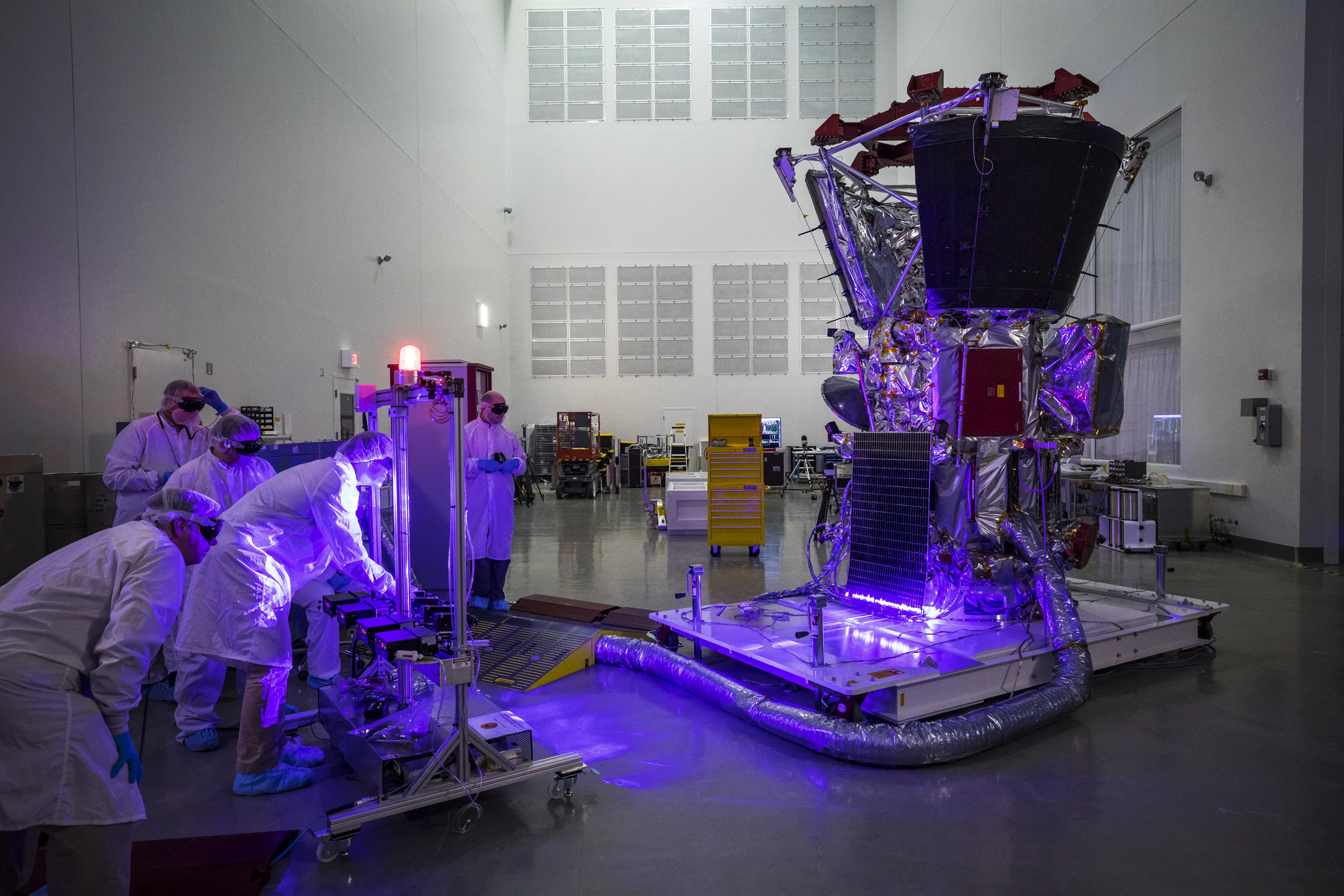Purple Gaze: Parker Solar Probe's Solar Arrays Pass Laser Illumination Testing
Posted on 2017-12-06 11:31:00NASA’s Parker Solar Probe passed laser illumination testing the week of Nov. 27, 2017. During this test, each segment of the spacecraft’s solar panels was illuminated with lasers to check that they were still electrically connected after the vigorous vibration and acoustic testing completed earlier this fall.
The spacecraft is in the midst of intense environmental testing at NASA’s Goddard Space Flight Center in Greenbelt, Maryland, in preparation for its journey to the Sun. These tests have simulated the noise and shaking the spacecraft will experience during its launch from Cape Canaveral, Florida, scheduled for July 31, 2018.
Parker Solar Probe’s integration and testing team must check over the spacecraft and systems to make sure everything is still in optimal working condition after experiencing these rigorous conditions – including a check of the solar arrays, which will provide electrical power to the spacecraft.
“This illumination testing verifies that each ‘string’ of solar cells on the array remains electrically connected to the spacecraft after vibration and acoustic testing,” explained solar array lead engineer Ed Gaddy of the Johns Hopkins Applied Physics Lab (APL) in Laurel, Maryland. APL is building and will operate the spacecraft for NASA.
To make sure that the 44 strings (a series of connected solar cells) on each panel are still well-connected after environmental tests, each string was illuminated individually to ensure that it would still create electricity and transfer it to the spacecraft. Lasers are ideal for this kind of testing, because their narrow beam allows the team to illuminate just one string at a time. The strikingly colored lasers were selected because they were readily available and because the solar cells operate efficiently at that color. But by themselves, these visible lasers are insufficient to power the solar cells, so the team also used infrared lasers for this test. Infrared light is not visible to our eyes as wasn’t captured in these images.
Parker Solar Probe will explore the Sun's outer atmosphere and make critical observations that will answer decades-old questions about the physics of stars. The resulting data will also help improve how we forecast major eruptions on the Sun and subsequent space weather events that can impact life on Earth, as well as satellites and astronauts in space. The mission is named for Eugene N. Parker, whose profound insights into solar physics and processes have helped shape the field of heliophysics.
Laser illumination testing of Parker Solar Probe's solar arrays at NASA Goddard Space Flight Center.
Credit: NASA/Johns Hopkins APL/Lee Hobson

SALaserTesting
Credit: NASA/Johns Hopkins APL/Ed Whitman
High-Res Image